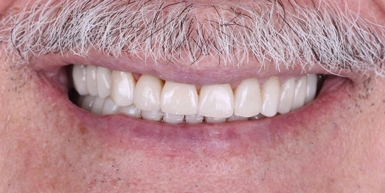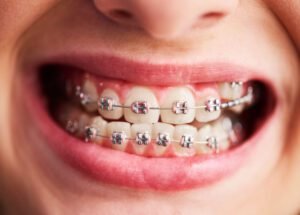
YOUR MOUTH IS THE FIRST TO DETECT OSTEOPOROSIS—TAKE CARE OF IT!
Oral health is not only essential for a bright smile, but it can also be an early indicator of systemic problems such as osteoporosis. This disorder weakens the bones, making them more prone to fractures, and it can leave visible signs in your mouth long before it shows up in other parts of the body. In this article, we’ll explore how your dentist can play a crucial role in the early detection of osteoporosis and what steps you can take to protect both your teeth and your bones.
The Connection Between Oral Health and Bone Diseases
Osteoporosis affects the density and quality of bones, and although it’s often associated with fractures in the hips, wrists, and spine, the jawbones are not exempt. These bones are the foundation of your teeth, and any weakening can lead to problems such as tooth loss, periodontal disease, and difficulty maintaining dental implants.
During a routine dental check-up, your dentist not only evaluates the health of your teeth and gums but also examines the quality of the underlying bone. Changes in bone structure detected through X-rays or clinical exams can be early signs of reduced bone density.
How Can Your Dentist Detect Osteoporosis?
Detecting osteoporosis in the dental office may seem unexpected, but it’s more common than you might think. In our experience, procedures such as dental implants provide a unique opportunity to assess bone quality. “When we open to place an implant, we can feel the condition of the bone, and in some cases, we may recommend additional tests if we notice something unusual,”.
In addition, dental X-rays—a common tool in dentistry—can reveal decreased bone density or bone mass loss in the jaws. These findings may be the first warning sign to seek a more detailed medical diagnosis.
Early Signs of Osteoporosis Visible in the Mouth
The mouth can be a window into overall bone health. Some of the most common signs of osteoporosis that a dentist may identify include:
- Tooth loss without apparent cause: This may indicate that the jawbone is losing structural support.
- Gum recession: Receding gums may be related to changes in the underlying bone density.
- Frequent jaw fractures: A weakened jaw may be more susceptible to fractures.
- Problems with dental implants: Difficulty maintaining or integrating implants may be related to low bone quality.
Specific tests are not always performed, but these signs may prompt a more thorough medical evaluation.
The Role of Dental Implants in Assessing Bone Density
Dental implants aren’t magic are more than just an aesthetic solution; they are a reflection of bone health. Placing an implant requires dense, healthy bone to ensure long-term success. However, when opening to place an implant, the dentist may notice that the bone is more fragile or porous than expected, which can be an indication of osteoporosis.
In some cases, specialized tests such as bone densitometry may be requested to confirm the diagnosis and take preventive or corrective measures.
Dental Tests and Exams That Can Save Your Bone Health
Dental X-rays and 3D scans are key tools in dentistry. Although they are designed to evaluate oral health, they can also provide clues about bone density. While, as you mentioned, advanced studies are not always performed, they are essential when an underlying condition such as osteoporosis is suspected.
Innovations such as cone beam computed tomography (CBCT) now make it possible to accurately assess the bone quality of the jaws, helping dentists and physicians make informed decisions.
Innovation in Dentistry: New Frontiers in Osteoporosis Detection
Dentistry is embracing technological advances that not only improve aesthetics and functionality but also contribute to the early diagnosis of systemic diseases. Some of these innovations include:
- Digital X-ray analysis: Artificial intelligence–powered algorithms can now identify patterns associated with osteoporosis.
- Salivary biomarkers: Recent research suggests that certain markers present in saliva may indicate changes in bone density.
- Digital impressions and long-term monitoring: These technologies allow dentists to detect subtle changes in bone structure over time.
“Innovation” highlights how technology is redefining the dentist’s role in the prevention and detection of diseases.

Tips for Keeping Bones and Teeth Strong and Healthy
Prevention is key for both osteoporosis and oral health. Here are some practical tips:
- A diet rich in calcium and vitamin D: These nutrients are essential for maintaining bone density and dental health.
- Avoid tobacco and excessive alcohol: Both factors weaken bones and gums.
- Regular dental visits: Routine check-ups can identify problems before they worsen.
- Regular exercise: Activities such as walking or weightlifting help strengthen bones.
- Take care of your overall health: Conditions such as diabetes and stress can affect both bone and oral health.
The Importance of Early Prevention in Oral and Bone Health
Your mouth is a powerful ally in caring for your overall health. As mentioned, although specific tests are not always performed, a vigilant dentist may be the first to detect problems related to bone density. The key lies in innovation, observation, and collaboration among healthcare professionals.
Protecting your bones and teeth is not just a matter of aesthetics—it’s an investment in your quality of life. Listen to your mouth, because it may be giving you a clue about your bone health.

Conclusion: Your Smile Is a Reflection of Your Overall Well-Being
Early detection of osteoporosis in the dental office is an example of the impact oral health can have on diagnosing systemic diseases. With proper care and the use of innovative technology, you can maintain overall health and enjoy a full life. Never underestimate the power of your smile—take care of it! 😊





